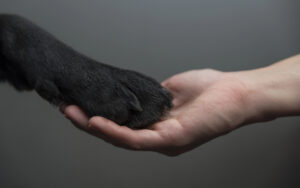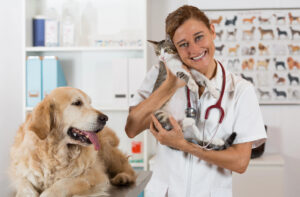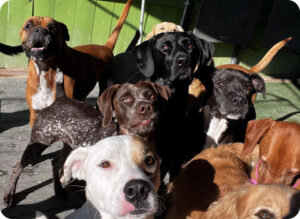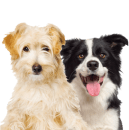
Understanding Pet Body Language: A Guide to Reading Your Canine Friend
Every day, without saying a word, our pets tell us what they’re thinking and feeling through their body language. Animals, like people, have their own distinct ways of communicating feelings, wants, and even danger. Understanding these nonverbal signs is essential for us as pet owners to guarantee our pets’ happiness and health and to deepen our connection with them. Let us help you understand the signals your pet is giving you by delving into the fascinating world of pet body language.

Boarding Clients!*Discount does not apply during holiday/peak rate periods.


The Importance of Understanding Pet Body Language
Envision being able to tell if your dog is happy, nervous, or in the mood for a snuggle just by watching their body language and expressions. You may avoid arguments and misunderstandings with your pet by learning to read their body language and responding accordingly. It’s especially important when a pet is being introduced to a new setting, circumstance, or animal.
Interpreting Common dog Pet Body Language Signals
Tail:
Contrary to popular assumption, a wagging tail is not always indicative of contentment. Different feelings can be communicated through the wag’s location, velocity, and rigidity. A comfortable, low wag typically indicates friendliness, while a high, rigid wag may indicate attention or hostility.
Ears:
Ears that point forward indicate interest or enthusiasm. Ears that are pinned back might be a sign of submission or fear. Raised, non-tense canine ears indicate an interested or curious pup.
Eyes:
Making direct eye contact with a dog can be interpreted as a show of both confidence and a challenge. A kind gaze conveys affection, whereas a threatening stare could be misunderstood.
General Signs
Yawning:
Pets’ yawning isn’t always a sign of exhaustion. When dogs are feeling apprehensive or stressed, they often start yawning.
Licking Lips:
When a dog is scared or trying to placate whatever they see as a threat, they may lick their lips.
Shaking Off:
If a dog suddenly shakes their body as if drying off, even when they’re not wet, it might be a way to release tension after a stressful encounter or experience.
Whale Eye:
This term refers to when you can see the whites of a dog’s eyes, often due to them turning their head while keeping their gaze fixed. It can suggest stress or unease, especially if accompanied by other signs of discomfort.

Responding to Pet Body Language
Observe Closely:
Pay close attention to your pet’s body language, facial expressions, and vocalizations to get a full picture of how they’re feeling.
Respect Boundaries:
Give your pet some room and time to relax if they are showing indications of stress, like as snarling or avoiding eye contact.
Positive Reinforcement:
To promote desirable behaviors in your pet, such as tranquility or playfulness, use positive reinforcement techniques such as praise, treats, and toys.
Consult Professionals:
You should seek the advice of a vet or animal behaviorist if you are confused about your pet’s body language or if it shows persistent signs of stress or hostility.
Deepening the Human-Pet Connection
Your relationship with your pet will grow stronger as you learn to read and respond to its body language. Understanding your pet’s emotional state and responding appropriately will go a long way towards making them feel at home with you.
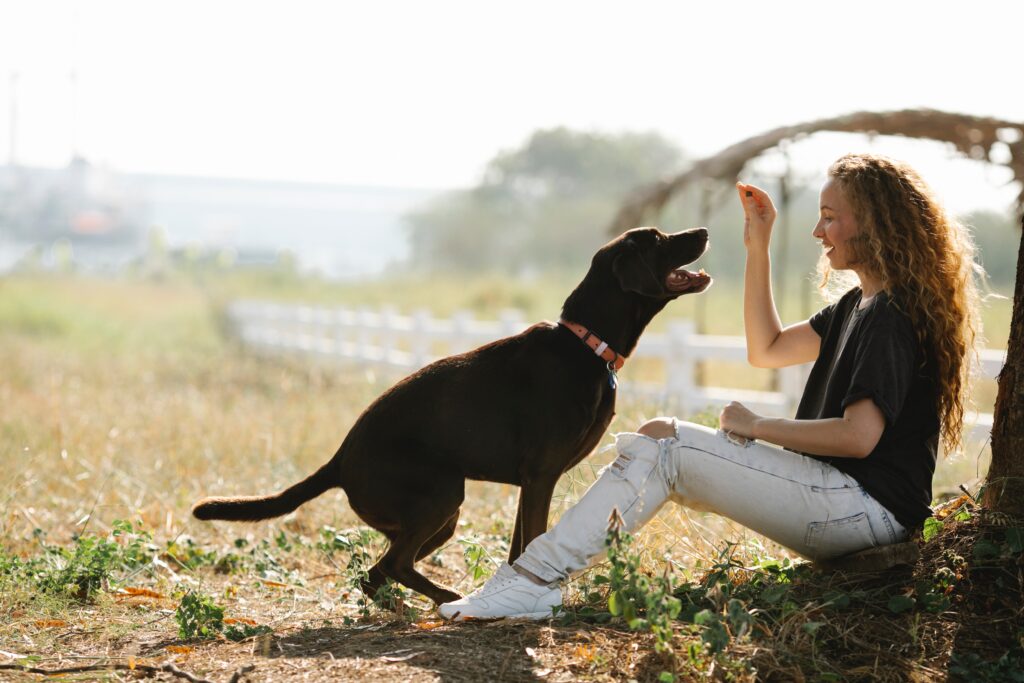
Frequently Asked Questions (FAQ) About Understanding Pet Body Language
Why is understanding pet body language important?
It’s critical to learn how to read your pet’s body language so you can understand what it’s feeling, what it needs, and what it could be trying to tell you. You’ll be better able to respond, avoid arguments, and get closer to your furry buddy as a result.
How can I interpret my dog's tail wagging?
The way a dog wags its tail can indicate its mood. A comfortable, low wag typically indicates friendliness, while a high, rigid wag may indicate attention or hostility.
Why do dogs yawn when they're not tired?
Dogs yawn not only when they’re weary, but also when they’re anxious or stressed. One way they may deal with stress is by yawning.
How should I respond if my pet displays signs of discomfort?
Give your pet some room and time to settle down if they are showing indications of stress, like as snarling or avoiding eye contact. Take care not to force them into uncomfortable circumstances.
Can I reinforce positive behavior using body language cues?
Yes. When your pet displays desirable behaviors, you can reward them with positive reinforcement like treats, praise, and playtime. This reinforces in their minds that those actions lead to favorable results.
What if I'm not sure about my pet's body language signals?
Consult your vet or an animal behaviorist if you are confused by your pet’s body language or if their behavior often seems tense or hostile.
Can understanding pet body language prevent conflicts with other animals?
Yes, being aware of your pet’s body language can assist in avoiding confrontations with other animals. Early intervention and skillful management of encounters are possible when indicators of discomfort or aggressiveness are recognized and dealt with.
Can I use my pet's body language to deepen our bond?
Yes. You can demonstrate your care and concern for your pet by reading and reacting to its body language. The trust and closeness between you two will grow as a result.
conclusion
Understanding the nonverbal communication of our dogs is key to developing a close and mutually satisfying bond with them. Everything our pets do—from wagging their tails to flicking their ears—reveals something about their emotions and needs. Spend some time studying your pet’s body language and expressions so you can react correctly. Doing so will make you not just a better pet owner, but also a reliable friend who truly appreciates and values the needs of their canine or feline friend.










